Overview
The article titled "7 Key Near IR Range Applications in Pharmaceuticals and Beyond" underscores the pivotal role of near-infrared (NIR) spectroscopy across a spectrum of sectors, with a particular emphasis on pharmaceuticals. NIR spectroscopy is not merely a tool; it is essential for quality control and monitoring within the pharmaceutical industry. Its applications extend into:
- Agriculture
- Materials science
- Environmental studies
- Medical diagnostics
- Astronomy
- Particle measurement
This breadth of usage illustrates the versatility and critical importance of NIR spectroscopy in enhancing efficiency and accuracy across these diverse fields. By integrating NIR spectroscopy, industries can significantly improve their operational standards and outcomes.
Introduction
Near-infrared spectroscopy (NIRS) is revolutionizing a multitude of fields, from pharmaceuticals to agriculture and beyond, by offering precise, non-invasive analysis. This cutting-edge technology not only enhances quality control and monitoring but also opens avenues for innovative applications that significantly improve efficiency and outcomes across various industries.
As advancements continue to emerge, however, critical questions arise regarding the challenges that accompany these innovations and their long-term implications. How can stakeholders effectively harness the full potential of near-infrared technology while addressing its inherent limitations?
JM Science Electronic Stethoscope: Enhancing Remote Patient Monitoring
The JM Science electronic stethoscope significantly enhances remote patient observation, empowering healthcare professionals to record and analyze heart and lung sounds from a distance. By employing advanced audio processing techniques, this device amplifies sounds, enabling clinicians to detect anomalies with heightened accuracy. Its seamless integration with telemedicine platforms facilitates real-time data sharing, essential for timely interventions and improved patient outcomes.
Notably, research from the University of Pittsburgh Medical Center indicates that remote patient oversight can reduce hospital readmission rates by up to 76%, underscoring the stethoscope's role in effectively managing chronic conditions. Furthermore, a study by MSI International reveals that 80% of Americans support the use of remote patient observation, highlighting the growing acceptance of such innovations.
With its wireless functionality and user-friendly interface, the electronic stethoscope has emerged as an , particularly for remote patient management. Additionally, Medicare recipients can receive over $1,000 in reimbursement annually by providing just 20 minutes of remote patient observation each month, making this advancement not only beneficial for patient care but also financially appealing. As healthcare professionals increasingly embrace this technology, the potential for enhanced patient care continues to expand.
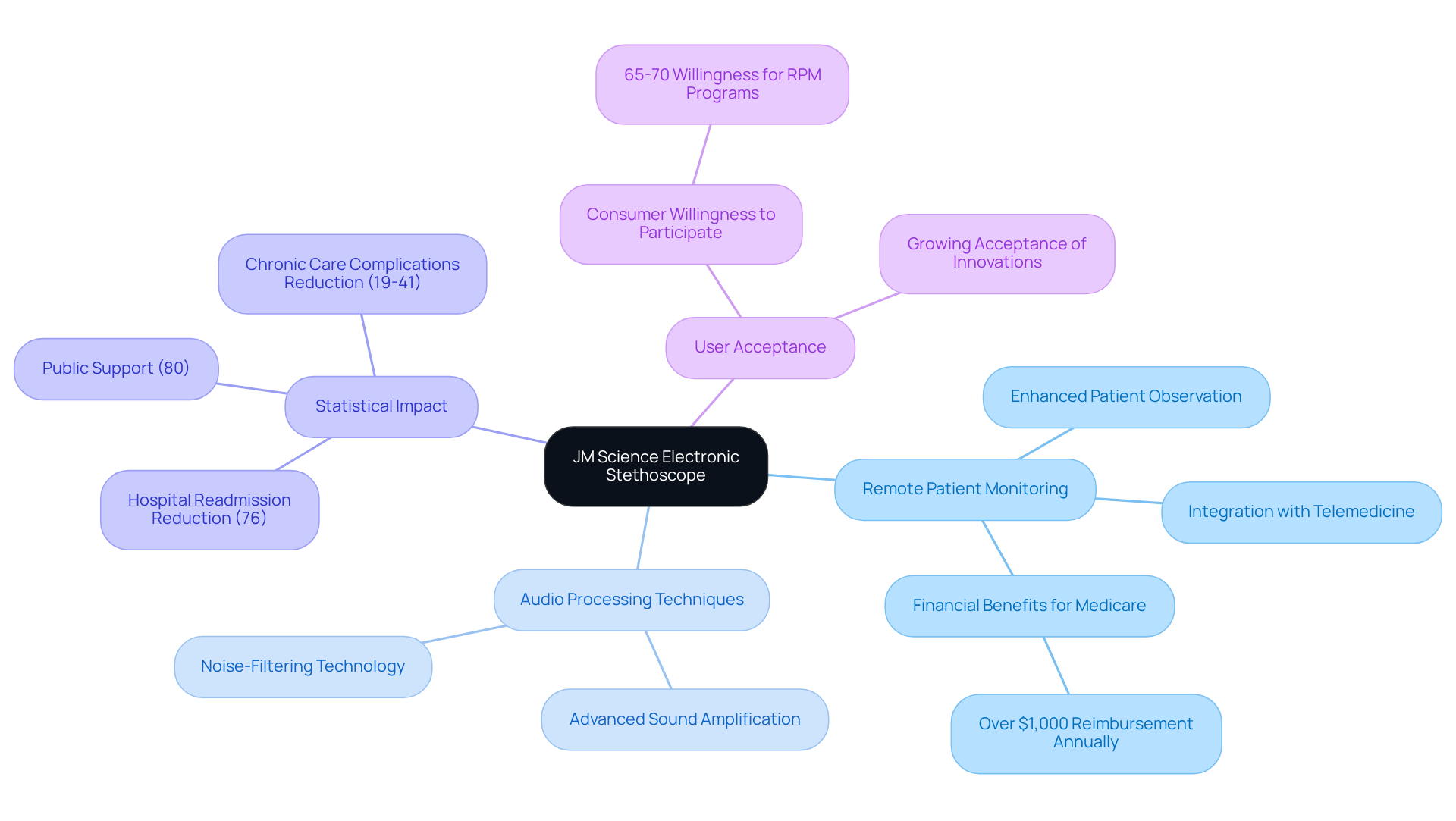
Near-Infrared Spectroscopy in Agriculture: Monitoring Plant Health
Near-infrared spectroscopy is revolutionizing agricultural practices by enabling precise monitoring of plant health through the assessment of moisture content, nutrient levels, and disease identification. By analyzing the reflected NIR light from plant surfaces, farmers gain critical insights into crop conditions without inflicting damage. This allows for timely interventions, optimizing irrigation and fertilization strategies. For instance, recent studies, such as Berardo et al.'s investigation into the rapid identification of mycotoxins in maize using near-infrared spectroscopy, illustrate the technique's efficacy in agricultural applications.
Moreover, near-infrared spectroscopy can detect plant stress before visible symptoms manifest, as evidenced by Yang et al.'s measurement of leaf temperature through infrared thermal imaging technology. Agricultural researchers emphasize the importance of near-infrared spectroscopy in characterizing organic compounds and evaluating crop health, highlighting its essential role in ensuring food security and promoting sustainable agricultural development. The integration of near-infrared spectroscopy with advanced data processing techniques, including deep learning algorithms, has yielded promising results in enhancing calibration models, thereby improving the accuracy of nutrient assessments and disease detection.
As the agricultural sector increasingly embraces innovative technologies, near-infrared range spectroscopy, operating within the wavelength of 800-2500 nm, emerges as a crucial tool for enhancing crop yield and health monitoring. However, challenges such as calibration and operational factors, including environmental influences on accuracy, must be addressed to fully unlock its potential.
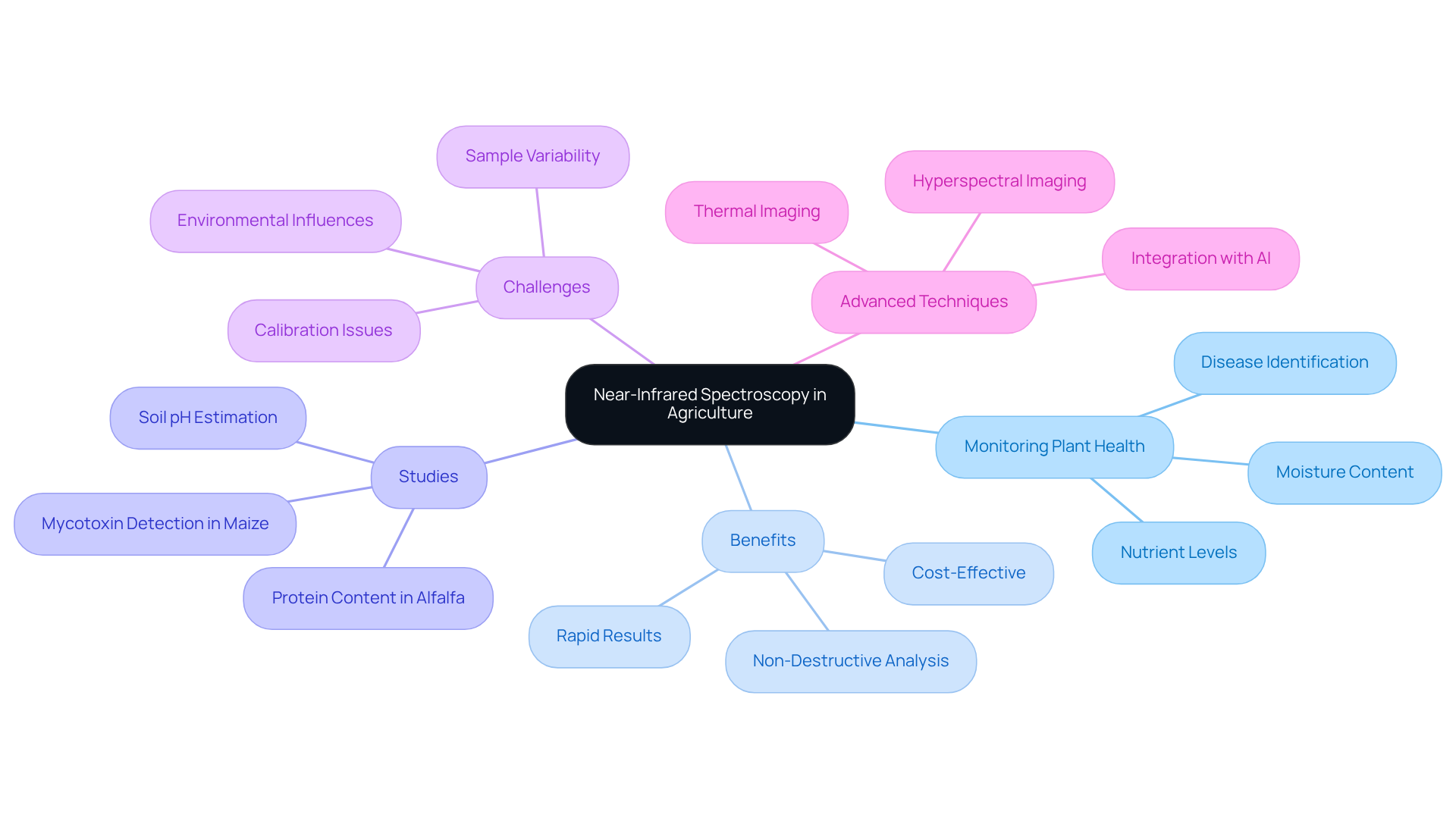
Near-Infrared Applications in Materials Science: Analyzing Properties
In materials science, analysis within the near ir range is pivotal in examining the properties of various materials, including polymers, metals, and composites. This technique facilitates rapid evaluations of chemical composition, moisture content, and structural integrity, making it essential for . Notably, portable spectroscopy devices operating in the near ir range have achieved residual predictive deviation (RPD) values of 5.67 for acidity and 2.07 for fatty acid ethyl esters, demonstrating their effectiveness in monitoring critical quality parameters. By employing near-infrared spectroscopy, manufacturers can ensure consistency and adherence to specifications, which is vital for maintaining product integrity.
The integration of near ir range spectroscopy into production processes not only reduces waste but also enhances efficiency, resulting in significant cost savings and improved product performance. As emphasized by experts in the field, the non-invasive nature of near-infrared spectroscopy permits real-time observation without extensive sample preparation, particularly beneficial in dynamic manufacturing environments. This capability positions the system as a revolutionary tool in the quest for elevated standards across various sectors, including its effective application in the olive oil industry for control and traceability.
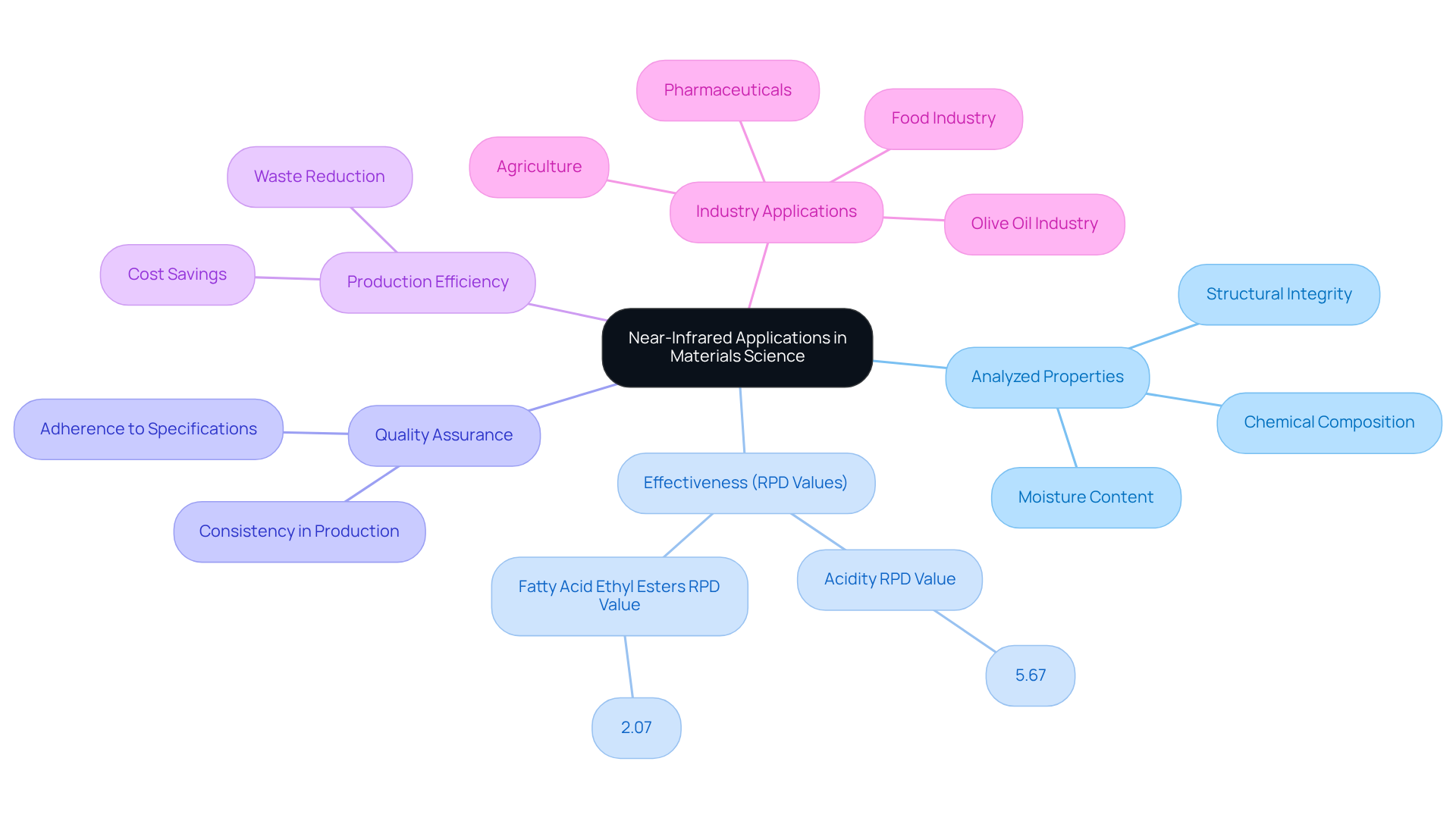
Near-Infrared Spectroscopy in Pharmaceuticals: Ensuring Quality Control
Near-infrared spectroscopy stands as a pivotal instrument within the pharmaceutical sector, significantly enhancing standards control throughout the production process. This advanced technique facilitates the rapid examination of raw materials, intermediates, and finished products, enabling real-time monitoring of critical characteristics. Fully compliant with regulatory standards, it has become a cornerstone of Good Manufacturing Practices (GMP). By leveraging near-infrared spectroscopy, pharmaceutical companies can efficiently identify impurities, verify components, and maintain consistent product quality, thereby ensuring patient safety.
The integration of near-infrared spectroscopy into manufacturing processes not only streamlines compliance with GMP but also supports ongoing assurance, ultimately fostering confidence in pharmaceutical products. As the industry evolves, there is a growing demand for the modernization of current Good Manufacturing Practices (cGMP) regulations to align with 21st-century scientific advancements, emphasizing the importance of near IR range spectroscopy in contemporary practices. Furthermore, the standardization of spectral acquisition conditions is crucial for ensuring consistent performance and regulatory compliance.
With the projected to expand significantly, the role of near IR range spectroscopy in pharmaceuticals is anticipated to increase, despite challenges such as the shortage of qualified professionals. Additionally, the shift towards portable and compact spectrometers is revolutionizing the application landscape of near-infrared spectroscopy, making standards control more accessible across various environments.
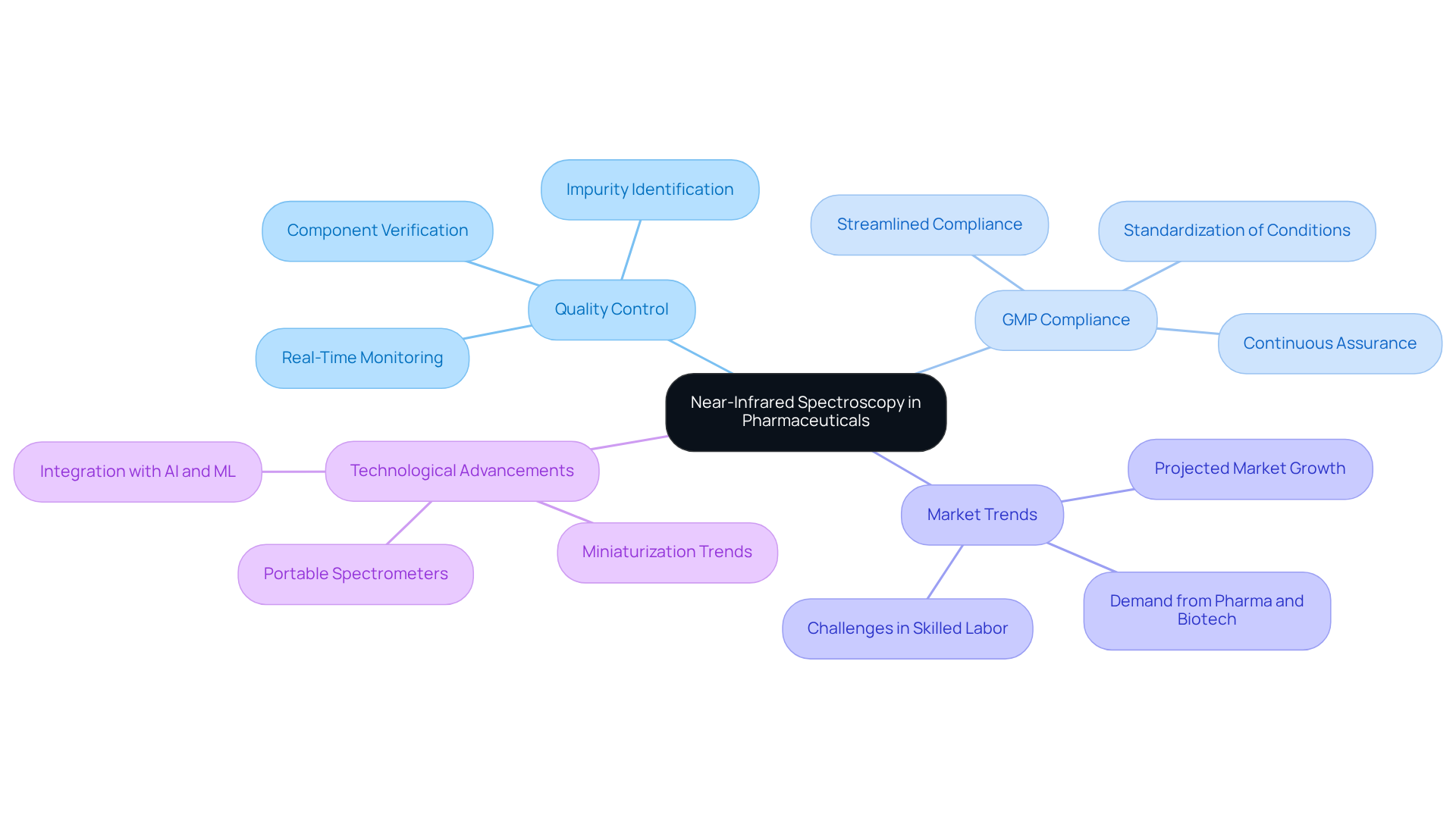
Remote Monitoring with Near-Infrared Technology: Environmental Studies
Near IR range technology is revolutionizing environmental studies by enabling precise assessments of soil composition, water quality, and vegetation health. By analyzing NIR reflectance data, researchers can effectively gauge the impact of pollutants and climate change on ecosystems. This non-invasive methodology facilitates continuous observation, yielding vital data that informs effective .
Notably, near IR range spectroscopy has demonstrated high predictive accuracy for soil microbial biomass and biological activity, with correlation coefficients reaching R = 0.94 and R = 0.80, respectively. Such capabilities empower timely responses to ecological challenges, significantly enhancing the efficiency of environmental assessments.
As one environmental scientist noted, "This technology offers a practical and economical option for ecological monitoring, greatly enhancing our comprehension of soil and water quality dynamics." The ability to conduct remote evaluations using near IR range spectroscopy not only enhances data collection but also facilitates proactive measures to tackle environmental challenges.
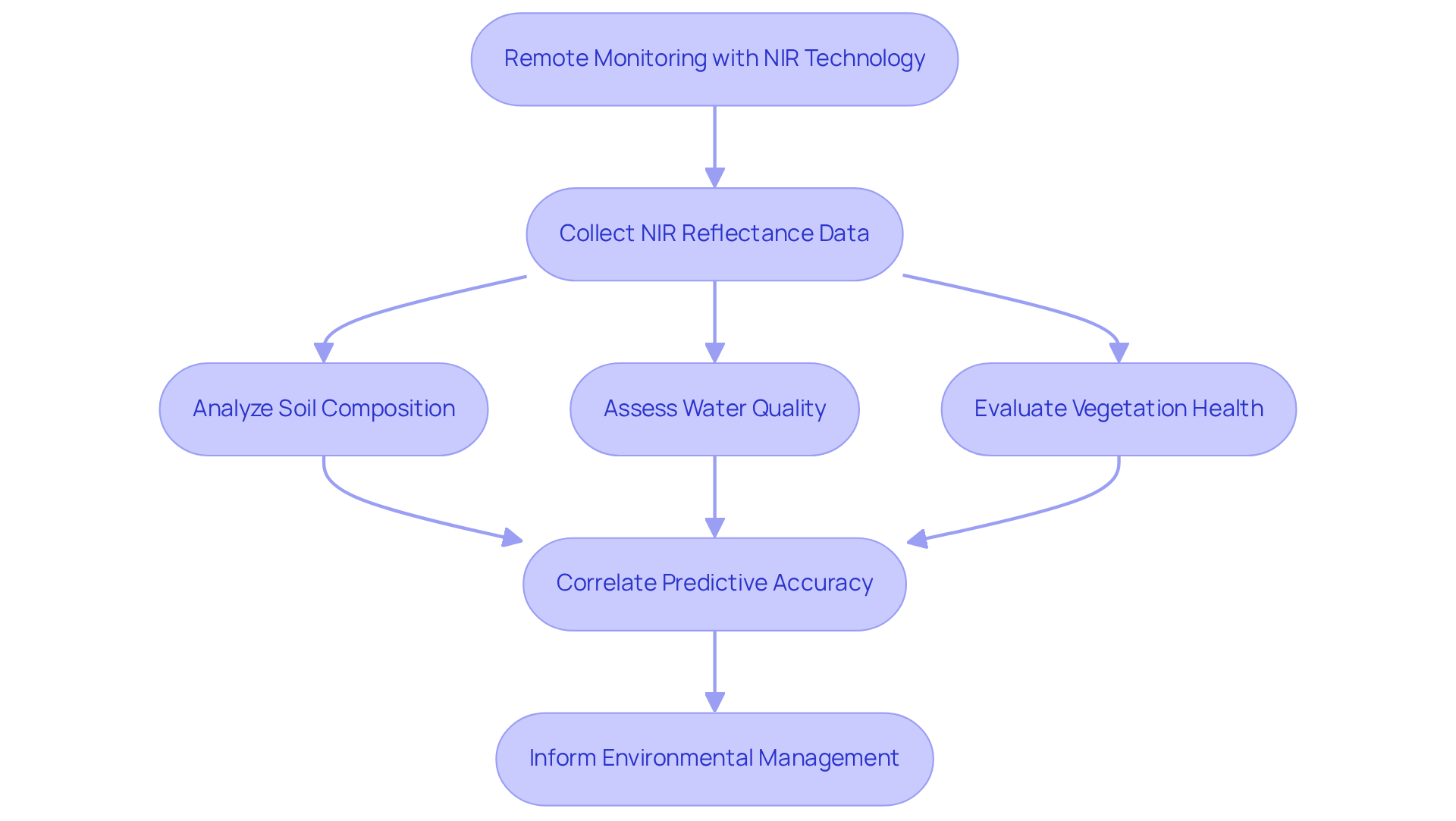
Near-Infrared Spectroscopy in Medical Diagnostics: Non-Invasive Testing
Near-infrared spectroscopy, which operates within the near IR range, is revolutionizing medical diagnostics by offering non-invasive testing alternatives for a variety of conditions. This groundbreaking innovation allows for the , blood circulation, and metabolic function without the need for invasive methods. For instance, near-infrared spectroscopy is employed to observe brain activity and identify irregularities in real-time. Its capacity to deliver immediate results significantly enhances clinical decision-making and patient management, establishing it as an indispensable tool in contemporary healthcare.
Recent advancements in near-infrared spectroscopy have further solidified its role in clinical settings, making it a reliable option for healthcare professionals dedicated to optimizing patient outcomes. Research indicates that near IR range spectroscopy has been effectively utilized in 710 free flap procedures, highlighting its practical application in clinical practice.
Nevertheless, it is crucial to acknowledge certain limitations of near-infrared spectroscopy technology, including the uncertain contribution of myoglobin to overall signals and the influence of adipose tissue thickness on measurements. By integrating insights from healthcare experts, such as Simon Hyttel‐Sorensen, who emphasized the need for further studies to validate the efficacy of near-infrared spectroscopy monitoring, a more comprehensive understanding of its applications can be achieved.
In summary, while near-infrared spectroscopy presents substantial advantages in non-invasive testing, ongoing research and clinical trials are essential to fully realize its potential within the healthcare landscape.
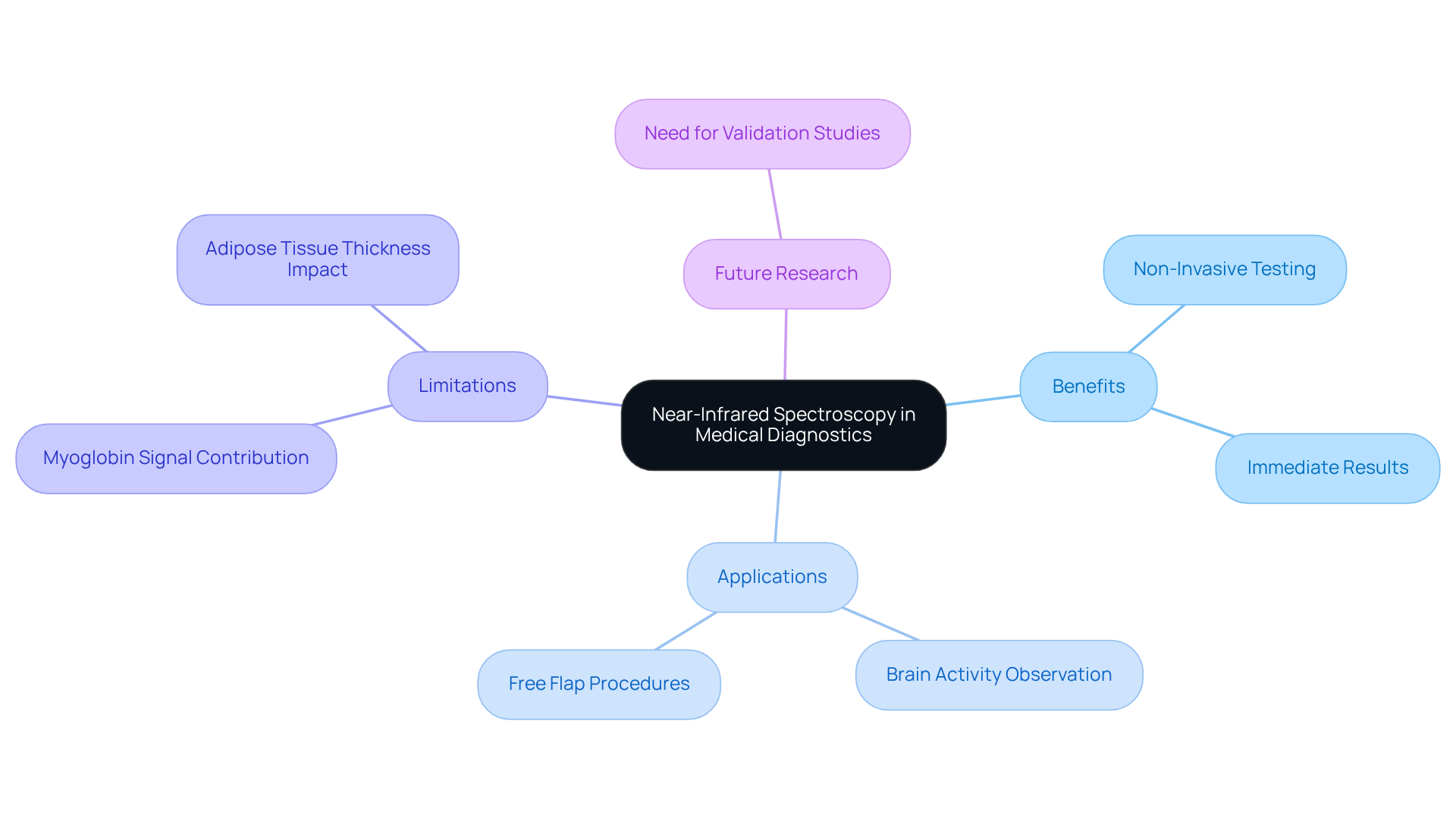
Near-Infrared Spectroscopy in Astronomy: Analyzing Celestial Bodies
In astronomy, near ir range spectroscopy serves as an invaluable tool for analyzing celestial bodies, including stars, planets, and galaxies. By examining the NIR light emitted or reflected by these objects, astronomers can ascertain their composition, temperature, and distance. This technique proves especially beneficial for observing objects obscured by dust, as near ir range light possesses the ability to penetrate these barriers.
Recent advancements in near-infrared spectroscopy technology have facilitated more detailed investigations of exoplanets and the chemical processes occurring in distant galaxies, thereby enhancing our comprehension of the universe. For instance, European astronomers have crafted the most precise three-dimensional map of star-forming regions in the Milky Way, utilizing data from the Gaia space telescope. This achievement underscores the capability of near-infrared spectroscopy in unraveling the mysteries of cosmic evolution.
Additionally, a team from Cornell University has identified a new category of remote, powerful galaxies emitting infrared radiation, located approximately 11 billion light-years from Earth. This discovery exemplifies the instrument's prowess in detecting significant cosmic phenomena. With research suggesting a , this institution plays a pivotal role in studying such celestial events.
The ability to examine celestial bodies through near ir range spectroscopy has profound implications for exoplanet research, enabling scientists to identify atmospheric compositions and assess habitability, thereby expanding our understanding of potential life beyond Earth. As Professor Phil Charles aptly noted, the insights derived from these analyses are crucial for advancing our knowledge of the universe.
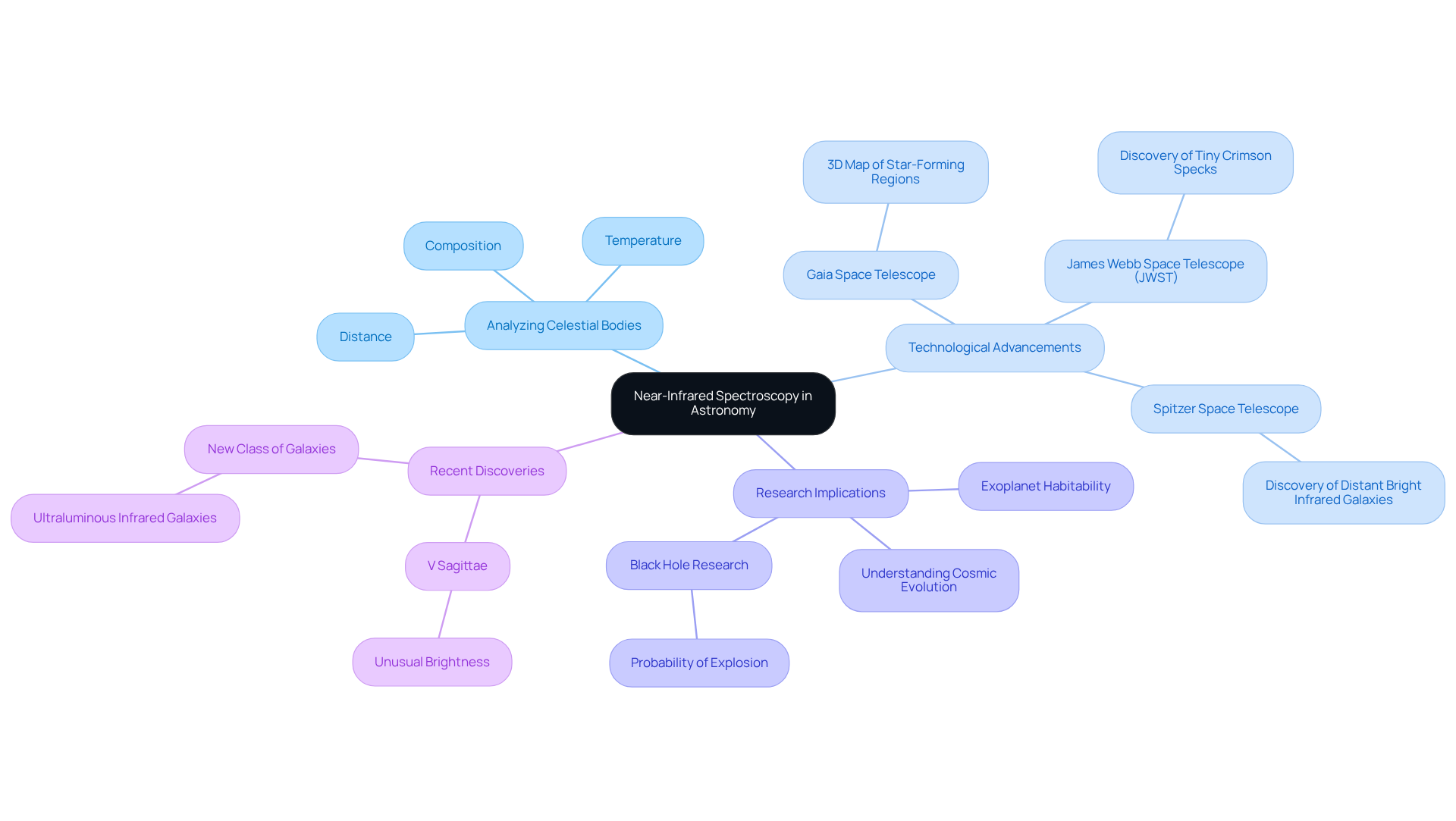
Particle Measurement with Near-Infrared Spectroscopy: Scientific Applications
Near IR range spectrometry is pivotal in particle measurement across a range of scientific applications, especially within the pharmaceutical industry. By examining the NIR light absorbed by particles, researchers can accurately evaluate the size, shape, and distribution characteristics of powders, granules, and emulsions. This capability is indispensable for adhering to quality standards, as and stability.
Furthermore, the [near IR range spectroscopy](https://jmscience.com) offers a rapid, non-invasive technique for particle analysis, establishing itself as a crucial instrument in both research and industrial environments. Its capacity to deliver real-time data significantly enhances the efficiency of pharmaceutical processes, ensuring that products consistently meet rigorous quality standards.
As highlighted by industry experts such as Gabriela Schaepman-Strub from the University of Zurich, "The incorporation of near-infrared spectroscopy into particle analysis processes not only enhances operations but also aids in better product formulations and patient outcomes."
Additionally, advancements in instrument design, along with the critical nature of calibration and validation in reducing uncertainties, underscore the vital role of near IR range spectroscopy in pharmaceutical applications.
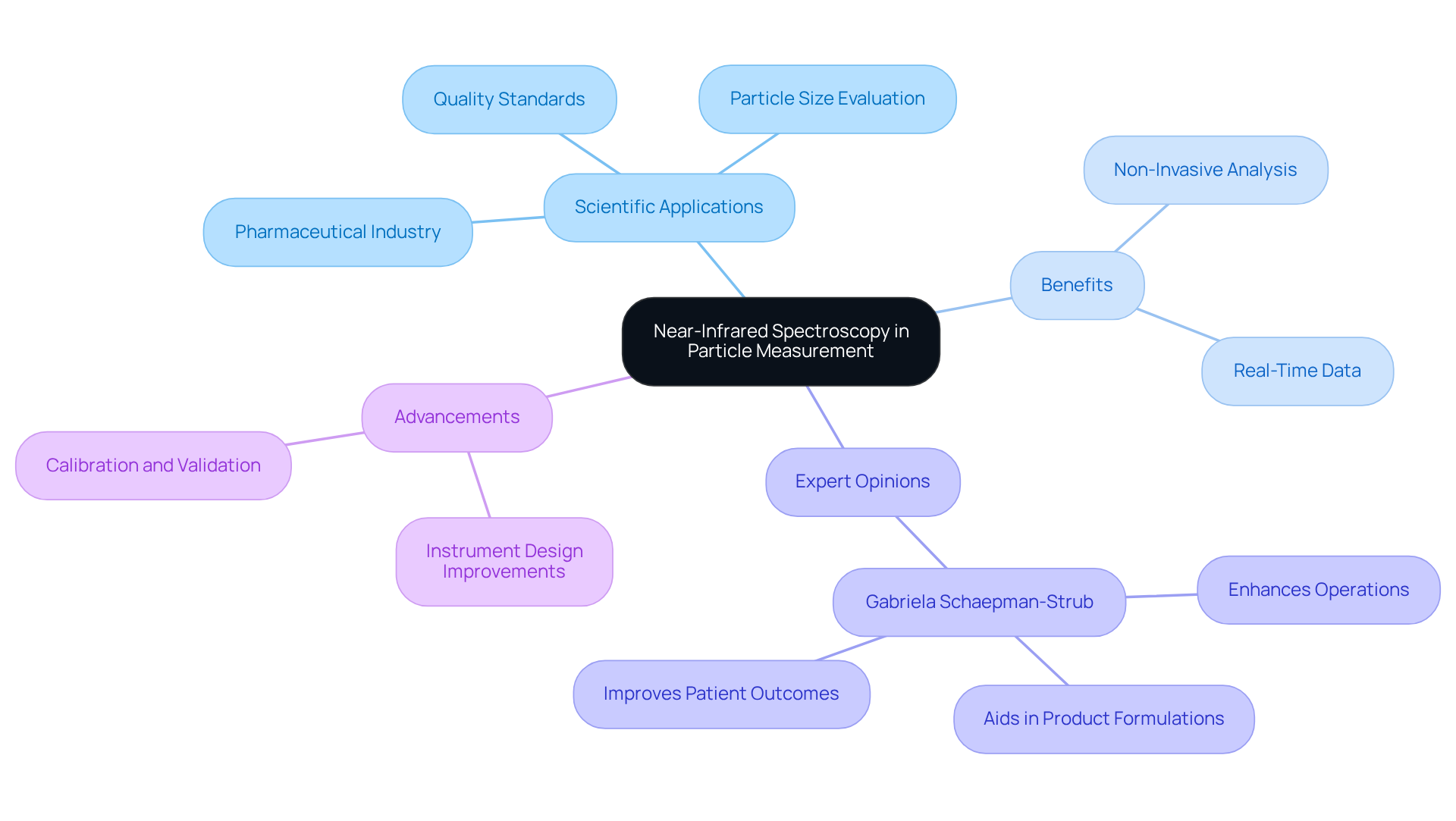
Industrial Applications of Near-Infrared Technology: Quality Assurance
In industrial settings, near IR range analysis plays a crucial role in maintaining standards across diverse industries, including food, pharmaceuticals, and chemicals. This technology empowers producers to monitor essential performance characteristics in real-time, ensuring adherence to stringent industry standards. By facilitating the rapid evaluation of both raw materials and finished products, it significantly reduces reliance on extensive laboratory testing.
For instance, in the food sector, near IR range spectroscopy is employed to assess the condition of root crops, enabling accurate predictions of moisture, sugar, and starch levels—factors vital for upholding product quality. Furthermore, this technique represents a chemical-free and environmentally friendly method for standard monitoring, aligning seamlessly with sustainable practices.
In the pharmaceutical realm, near IR range spectroscopy aids in the swift evaluation of active ingredients, ensuring consistent quality and compliance with regulatory standards. The continuous advancements in near IR range spectroscopy systems, such as the in fresh produce supply chains, underscore its evolving significance in quality assurance.
However, it is essential to recognize challenges, such as the influence of sample size variations on accuracy, to provide a balanced view of the system's capabilities. As industry leaders increasingly acknowledge the transformative potential of near-infrared spectroscopy, its application continues to expand, driving progress in quality assurance practices across various sectors.
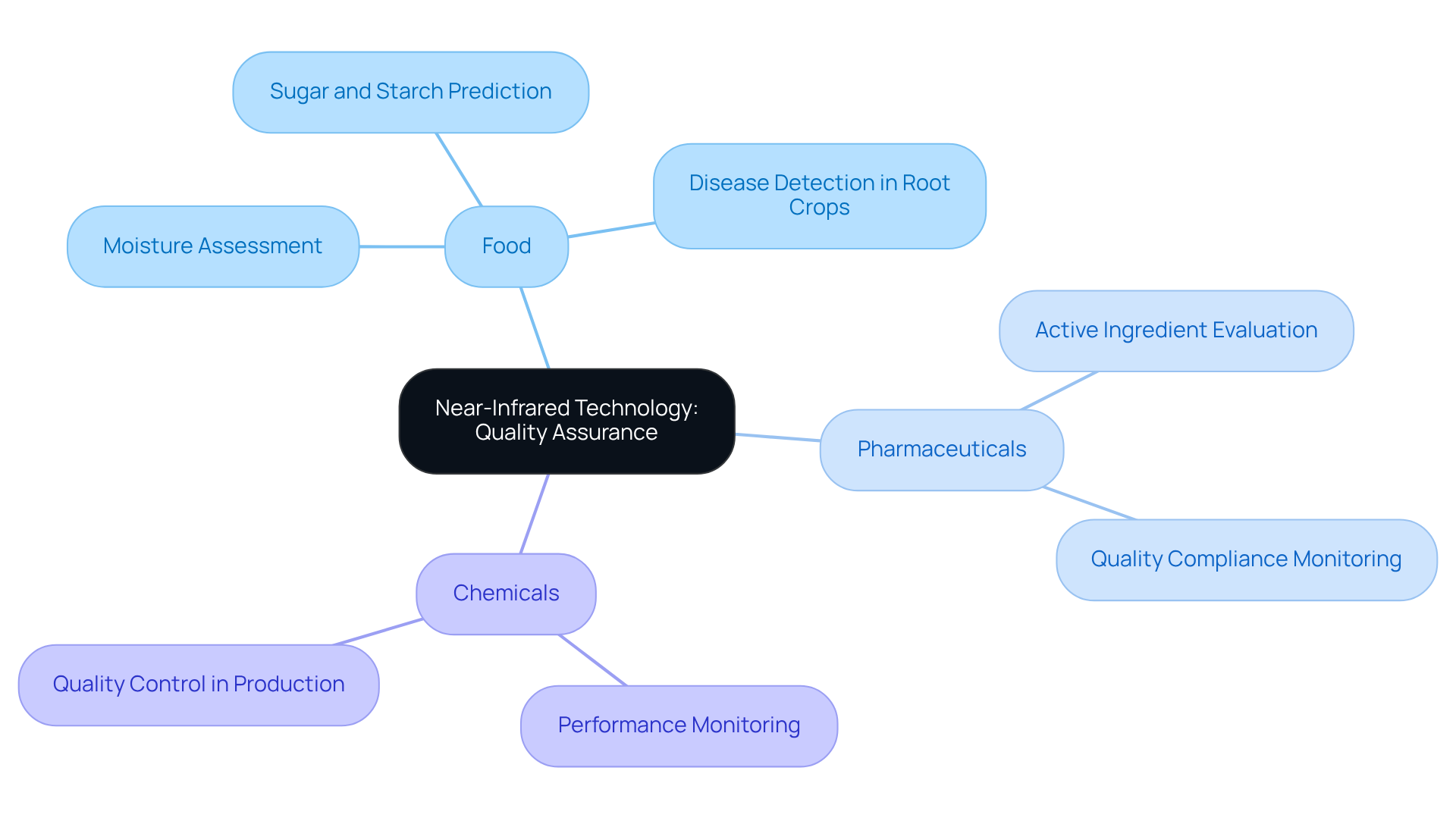
History of Near-Infrared Spectroscopy: Evolution and Impact
The history of near IR range spectroscopy (NIRS) traces back to the early 19th century, marked by William Herschel's groundbreaking discovery of infrared radiation. This pivotal moment laid the foundation for a method that has evolved into a , widely recognized across various fields.
Initially confined to laboratory settings, NIRS has undergone significant advancements, leading to the development of portable instruments that facilitate on-site assessments in the near IR range for agriculture, pharmaceuticals, and environmental monitoring.
The continuous evolution of NIRS technology has profoundly influenced scientific research and industrial applications, establishing it as an indispensable tool in modern analytical practices.
As we delve deeper into the capabilities of NIRS, it becomes evident that its integration into diverse sectors not only enhances efficiency but also drives innovation, underscoring its critical role in contemporary analysis.
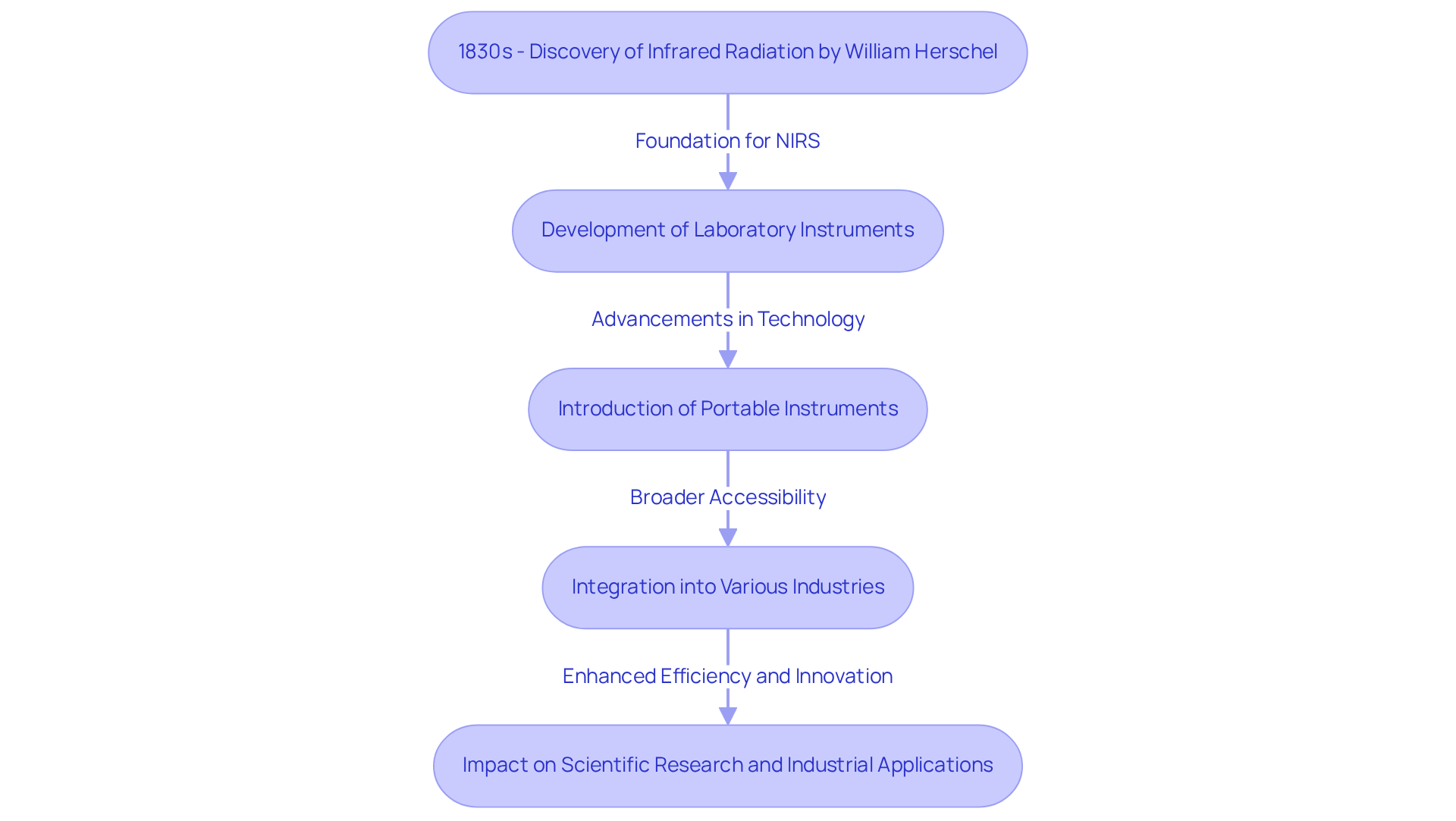
Conclusion
The exploration of near-infrared (NIR) technology underscores its transformative impact across various sectors, including healthcare, agriculture, and beyond. This article highlights the diverse applications of NIR spectroscopy, emphasizing its vital role in enhancing patient monitoring, agricultural practices, materials science, pharmaceuticals, environmental studies, medical diagnostics, astronomy, particle measurement, and industrial quality assurance. Each application illustrates how NIR technology not only boosts efficiency but also fosters innovation and upholds quality standards.
Key insights reveal:
- A significant reduction in hospital readmission rates through remote patient monitoring.
- Non-destructive analysis of plant health in agriculture.
- Assurance of product quality in pharmaceuticals via real-time monitoring.
Furthermore, NIR spectroscopy's contributions to environmental assessments and celestial studies emphasize its versatility and importance in advancing scientific understanding. The historical context of NIR technology demonstrates its evolution from laboratory use to widespread application across diverse fields, reflecting its increasing significance in contemporary analysis.
As industries progressively adopt near-infrared spectroscopy, an opportunity arises for stakeholders to leverage its capabilities to enhance outcomes and promote sustainable practices. Embracing this technology can lead to improved patient care, optimized agricultural yields, and stringent quality control across various sectors. Continued investment in research and development within the NIR domain promises to unlock even greater potential, making it imperative for professionals to remain informed about advancements and applications in this dynamic field.




